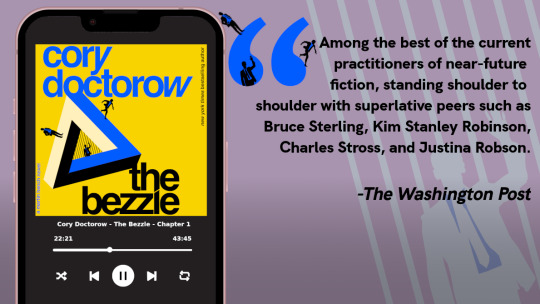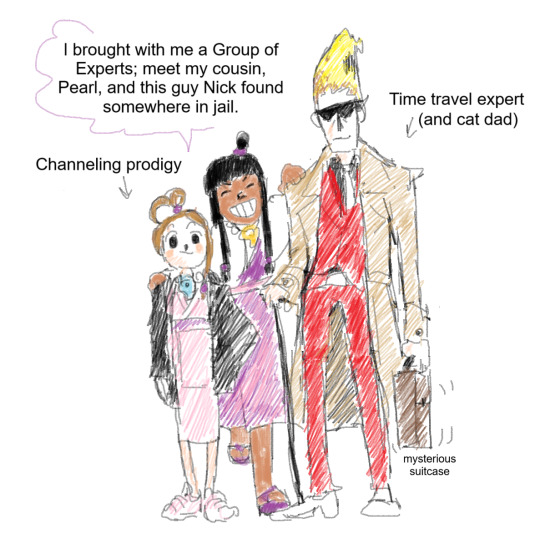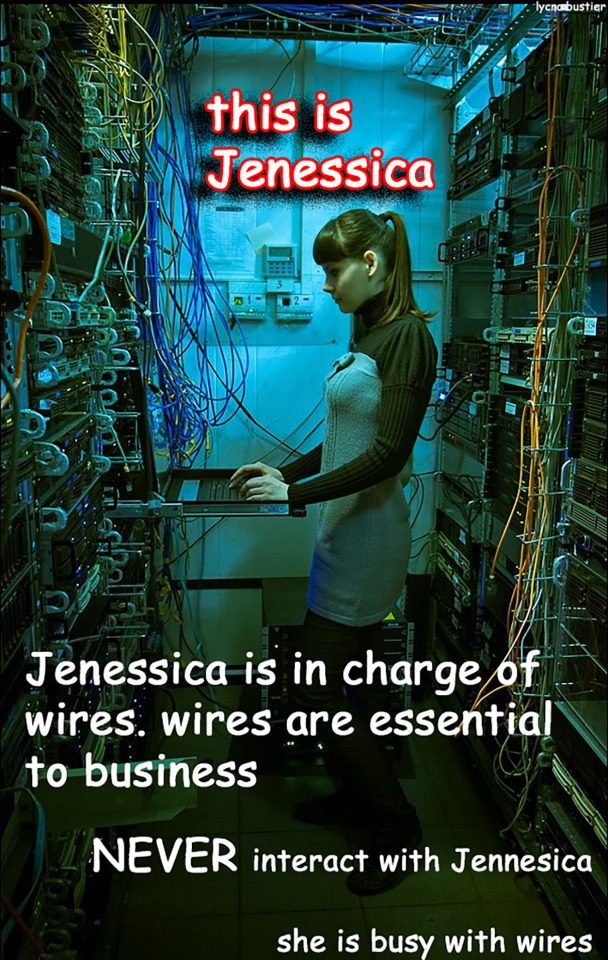#Technology in business
Explore tagged Tumblr posts
Text
The Impact of Digital Asset Management and Blockchain on Business Efficiency
Discover how Digital Asset Management (DAM) and Blockchain technology streamline business operations, enhance security, and drive efficiency across industries.
#Digital Asset Management#Blockchain#Business Efficiency#DAM benefits#Blockchain integration#Operational efficiency#Digital assets#Blockchain in business#Asset management tools#Technology in business
0 notes
Text
The Role of Technology in Facilitating Business Expansion

In today's interconnected world, technology plays a pivotal role in facilitating business expansion, particularly in dynamic markets like India. As businesses seek to capitalize on India's vast consumer base, growing economy, and evolving business landscape, leveraging technology becomes essential for driving growth, innovation, and competitive advantage. In this article, we'll explore the significance of technology in enabling business expansion in India and how businesses can harness the power of technology to fuel their growth strategies.
Digital Transformation and Market Reach
1. E-commerce Platforms: With the proliferation of e-commerce platforms in India, businesses can expand their reach and access a wider audience beyond geographical boundaries. Establishing an online presence through platforms like Amazon, Flipkart, and Myntra allows businesses to showcase their products or services to millions of Indian consumers, driving sales and brand visibility.
1. Market Reach and Accessibility:
- E-commerce platforms provide businesses with an extensive reach and accessibility to Indian consumers across the country. With millions of users accessing these platforms daily, businesses can tap into a vast and diverse consumer base, regardless of their physical location or size.
- By listing their products or services on popular e-commerce platforms such as Amazon, Flipkart, and Myntra, businesses gain visibility among Indian consumers who are actively searching for products or services online. This visibility significantly enhances the market reach of businesses, allowing them to target customers in urban, semi-urban, and rural areas across India.
2. Expanded Customer Base:
- E-commerce platforms enable businesses to expand their customer base beyond traditional brick-and-mortar stores. With the increasing adoption of smartphones and internet connectivity in India, more consumers are turning to online shopping for convenience, variety, and competitive pricing.
- Businesses can attract new customers and retain existing ones by offering a wide range of products or services on e-commerce platforms, catering to diverse preferences and tastes. This expanded customer base not only drives sales growth but also enhances brand recognition and loyalty among Indian consumers.
3. Ease of Entry and Low Barrier to Entry:
- E-commerce platforms provide businesses with a relatively low barrier to entry into the Indian market compared to setting up physical retail outlets. Businesses can create seller accounts and start selling their products or services on e-commerce platforms with minimal upfront investment and operational overheads.
- This ease of entry allows businesses of all sizes, including startups and small enterprises, to enter the Indian market and compete effectively against established players. By leveraging e-commerce platforms, businesses can overcome traditional barriers to entry and gain access to a vast pool of Indian consumers without the need for significant capital investment.
4. Marketing and Promotion Opportunities:
- E-commerce platforms offer various marketing and promotion opportunities for businesses to showcase their products or services and attract customers. Businesses can leverage features such as sponsored listings, discounts, deals, and promotions to enhance their visibility and drive sales on e-commerce platforms.
- Additionally, e-commerce platforms provide tools and analytics to track customer behavior, monitor sales performance, and optimize marketing campaigns. By analyzing data and insights provided by e-commerce platforms, businesses can refine their marketing strategies, target specific customer segments, and maximize their return on investment (ROI) in the Indian market.
5. Logistical Support and Fulfillment Services:
- E-commerce platforms often offer logistical support and fulfillment services to businesses, including warehousing, order processing, packaging, and delivery. By outsourcing these operational functions to e-commerce platforms, businesses can focus on core activities such as product development, marketing, and customer service.
- This streamlined logistics and fulfillment process ensure timely delivery of orders, enhances customer satisfaction, and builds trust in the brand. Businesses can leverage the infrastructure and expertise of e-commerce platforms to fulfill orders efficiently and effectively, even in remote or underserved areas of India.
2. Mobile Apps: The widespread adoption of smartphones has transformed consumer behavior in India, making mobile apps a powerful tool for business expansion. Developing mobile apps enables businesses to engage directly with customers, offer personalized experiences, and facilitate seamless transactions, driving customer loyalty and retention.
Here's a detailed explanation of how mobile apps contribute to business expansion:
1. Direct Customer Engagement:
- Mobile apps provide businesses with a direct and personalized channel to engage with customers. By offering a mobile app, businesses can stay connected with users 24/7, sending push notifications, updates, and personalized offers directly to their smartphones. This direct engagement fosters brand loyalty, encourages repeat purchases, and enhances the overall customer experience.
2. Convenience and Accessibility:
- Mobile apps offer unparalleled convenience and accessibility to customers, allowing them to browse products or services, place orders, and make payments with just a few taps on their smartphones. This convenience factor is especially crucial in India, where mobile penetration is high, and consumers are increasingly relying on their smartphones for everyday tasks, including shopping and transactions.
3. Personalized Experiences:
- Mobile apps enable businesses to deliver personalized experiences tailored to individual user preferences and behaviors. By leveraging data analytics and user insights, businesses can customize app content, product recommendations, and promotional offers based on user demographics, purchase history, and browsing patterns.
4. Enhanced Brand Visibility:
- Having a mobile app increases brand visibility and presence on customers' devices, serving as a constant reminder of the business and its offerings. Mobile apps often feature prominently on users' home screens, providing businesses with valuable real estate to showcase their brand logo, colors, and messaging. This visibility helps businesses stay top-of-mind among Indian consumers and stand out in a crowded marketplace.
5. Seamless Transactions:
- Mobile apps streamline the purchasing process, allowing customers to complete transactions seamlessly within the app. Integrated payment gateways, digital wallets, and secure checkout processes enable smooth and hassle-free transactions, reducing friction and abandonment rates. This seamless shopping experience encourages impulse purchases and boosts sales for businesses operating in India's competitive e-commerce landscape.
6. Offline Access and Performance:
- Mobile apps offer offline access to certain features and content, allowing users to access essential functionalities even in areas with poor or limited internet connectivity. This offline capability is particularly beneficial in India, where internet access can be sporadic in certain regions. By providing offline access, businesses ensure that users can engage with their app and make purchases regardless of their location or network connectivity.
7. Brand Loyalty and Retention:
- Mobile apps play a crucial role in building brand loyalty and fostering customer retention in India. Businesses can incentivize app usage through loyalty programs, rewards, and exclusive offers available only to app users. By providing value-added services, personalized recommendations, and timely notifications, businesses can create a loyal customer base that keeps coming back to the app for their needs.
Market Insights and Consumer Engagement
1. Big Data Analytics: Harnessing the power of big data analytics allows businesses to gain valuable insights into consumer behavior, market trends, and competitive dynamics. By analyzing data from various sources such as social media, website analytics, and customer feedback, businesses can make informed decisions, optimize marketing strategies, and identify new growth opportunities in the Indian market.
2. CRM Systems: Implementing customer relationship management (CRM) systems enables businesses to streamline sales processes, track customer interactions, and deliver personalized experiences. By centralizing customer data and communication channels, businesses can enhance customer engagement, nurture leads, and drive repeat business in India's competitive business environment.
Operational Efficiency and Scalability
1. Cloud Computing: Adopting cloud computing solutions allows businesses to enhance operational efficiency, reduce infrastructure costs, and scale their operations rapidly. Cloud-based services such as Software-as-a-Service (SaaS), Infrastructure-as-a-Service (IaaS), and Platform-as-a-Service (PaaS) offer flexibility and scalability, enabling businesses to adapt to changing market conditions and customer demands in India.
2. Enterprise Resource Planning (ERP) Systems: Implementing ERP systems streamlines business processes, integrates disparate systems, and improves collaboration across departments. By standardizing workflows, automating tasks, and providing real-time visibility into operations, ERP systems empower businesses to manage their expansion initiatives effectively and drive operational excellence in India's competitive business landscape.
Innovation and Competitive Advantage
1. R&D and Product Development: Investing in research and development (R&D) and product innovation allows businesses to stay ahead of the competition and meet the evolving needs of Indian consumers. By leveraging emerging technologies such as artificial intelligence (AI), machine learning (ML), and Internet of Things (IoT), businesses can develop innovative solutions, enhance product offerings, and differentiate themselves in the Indian market.
2. Digital Marketing and Branding: Leveraging digital marketing channels such as social media, search engine optimization (SEO), and content marketing enables businesses to build brand awareness, engage with target audiences, and drive customer acquisition in India. By crafting compelling digital marketing campaigns and leveraging data-driven insights, businesses can amplify their brand presence and gain a competitive edge in India's crowded marketplace.
As businesses embark on their expansion journey in India, embracing technology becomes imperative for driving growth, innovation, and success. By leveraging digital transformation initiatives, gaining market insights, enhancing operational efficiency, and fostering innovation, businesses can unlock new opportunities, expand their market reach, and thrive in India's dynamic business landscape. With technology as a strategic enabler, businesses can navigate challenges, capitalize on emerging trends, and achieve sustainable growth in one of the world's most promising markets for business expansion.
This post was originally published on: Foxnangel
#business expansion#expanding your business#business expansion in india#digital transformation#e commerce in india#technology in business#digital transformation in india#business growth#market expansion#e commerce growth in india#invest in india#foxnangel
1 note
·
View note
Text


ṇ̵̛̱͌̅̃͛̔o̴̮̓̀͂́̃_̴̛̲́s̷͈̋̈́̄̋͠ị̶͔̗̐͐̐̒̕g̵̛̱̘̣̑͂ņ̴̰͔̘͇̏̒̓̇͠͝a̸̜̥̩̭͋̌ḷ̶͔̖͗͋͛͛̃͆
#my art#jujutsu kaisen#jjk#jjk fanart#jujutsu kaisen fanart#gojo satoru#satoru gojo#geto suguru#satosugu#jjk gojo#eye strain/#eye horror/#like i said ik this concept has been done before and probably better than this but i hope that i did it Okay#i hope all the eye strain was not in vain gjhfgsh the amount of blue light in this image is not recommended by doctors#smh gojo ipad baby confirmed#too much screentime.png#in other news im happy i came up with smth else 2 put alongside the piece itself !!#was playing around with filters and effects and i was like ooh what does the binarization button do#makes it look like found footage is what it does i love it SO much#i almost like it better than the coloured version but i would rather die than let a day and a half of rendering go to waste#esp after i already scrapped the intended p2#still i would have posted the full b/w one side by side but it made the post look so busy and distracting and awful#so it's just geto's face ig smile :)#happy i stuck it out w this!!!#fr all i dunk on gojo gdi his aesthetic n design works so well with glitches and messed up technology#tb to tht other gojo + teal + glitches piece i did frever ago captioned smth like 'watch what you eat'#the glitch brushes in my inventory exist fr him and him alone
4K notes
·
View notes
Text
The Impact of Tokenization and Its Future: A Comprehensive Analysis

Powered by blockchain technology, tokenization has been evolving significantly and creating new opportunities across tech domains, and the perspectives are also growing.
#impact of technology#Technology in Business#Impact of Technology on Business#the impact of information technology on business#technology and the future
0 notes
Text
How lock-in hurts design

Berliners: Otherland has added a second date (Jan 28) for my book-talk after the first one sold out - book now!

If you've ever read about design, you've probably encountered the idea of "paving the desire path." A "desire path" is an erosion path created by people departing from the official walkway and taking their own route. The story goes that smart campus planners don't fight the desire paths laid down by students; they pave them, formalizing the route that their constituents have voted for with their feet.
Desire paths aren't always great (Wikipedia notes that "desire paths sometimes cut through sensitive habitats and exclusion zones, threatening wildlife and park security"), but in the context of design, a desire path is a way that users communicate with designers, creating a feedback loop between those two groups. The designers make a product, the users use it in ways that surprise the designer, and the designer integrates all that into a new revision of the product.
This method is widely heralded as a means of "co-innovating" between users and companies. Designers who practice the method are lauded for their humility, their willingness to learn from their users. Tech history is strewn with examples of successful paved desire-paths.
Take John Deere. While today the company is notorious for its war on its customers (via its opposition to right to repair), Deere was once a leader in co-innovation, dispatching roving field engineers to visit farms and learn how farmers had modified their tractors. The best of these modifications would then be worked into the next round of tractor designs, in a virtuous cycle:
https://securityledger.com/2019/03/opinion-my-grandfathers-john-deere-would-support-our-right-to-repair/
But this pattern is even more pronounced in the digital world, because it's much easier to update a digital service than it is to update all the tractors in the field, especially if that service is cloud-based, meaning you can modify the back-end everyone is instantly updated. The most celebrated example of this co-creation is Twitter, whose users created a host of its core features.
Retweets, for example, were a user creation. Users who saw something they liked on the service would type "RT" and paste the text and the link into a new tweet composition window. Same for quote-tweets: users copied the URL for a tweet and pasted it in below their own commentary. Twitter designers observed this user innovation and formalized it, turning it into part of Twitter's core feature-set.
Companies are obsessed with discovering digital desire paths. They pay fortunes for analytics software to produce maps of how their users interact with their services, run focus groups, even embed sneaky screen-recording software into their web-pages:
https://www.wired.com/story/the-dark-side-of-replay-sessions-that-record-your-every-move-online/
This relentless surveillance of users is pursued in the name of making things better for them: let us spy on you and we'll figure out where your pain-points and friction are coming from, and remove those. We all win!
But this impulse is a world apart from the humility and respect implied by co-innovation. The constant, nonconsensual observation of users has more to do with controlling users than learning from them.
That is, after all, the ethos of modern technology: the more control a company can exert over its users ,the more value it can transfer from those users to its shareholders. That's the key to enshittification, the ubiquitous platform decay that has degraded virtually all the technology we use, making it worse every day:
https://pluralistic.net/2023/02/19/twiddler/
When you are seeking to control users, the desire paths they create are all too frequently a means to wrestling control back from you. Take advertising: every time a service makes its ads more obnoxious and invasive, it creates an incentive for its users to search for "how do I install an ad-blocker":
https://www.eff.org/deeplinks/2019/07/adblocking-how-about-nah
More than half of all web-users have installed ad-blockers. It's the largest consumer boycott in human history:
https://doc.searls.com/2023/11/11/how-is-the-worlds-biggest-boycott-doing/
But zero app users have installed ad-blockers, because reverse-engineering an app requires that you bypass its encryption, triggering liability under Section 1201 of the Digital Millennium Copyright Act. This law provides for a $500,000 fine and a 5-year prison sentence for "circumvention" of access controls:
https://pluralistic.net/2024/01/12/youre-holding-it-wrong/#if-dishwashers-were-iphones
Beyond that, modifying an app creates liability under copyright, trademark, patent, trade secrets, noncompete, nondisclosure and so on. It's what Jay Freeman calls "felony contempt of business model":
https://locusmag.com/2020/09/cory-doctorow-ip/
This is why services are so horny to drive you to install their app rather using their websites: they are trying to get you to do something that, given your druthers, you would prefer not to do. They want to force you to exit through the gift shop, you want to carve a desire path straight to the parking lot. Apps let them mobilize the law to literally criminalize those desire paths.
An app is just a web-page wrapped in enough IP to make it a felony to block ads in it (or do anything else that wrestles value back from a company). Apps are web-pages where everything not forbidden is mandatory.
Seen in this light, an app is a way to wage war on desire paths, to abandon the cooperative model for co-innovation in favor of the adversarial model of user control and extraction.
Corporate apologists like to claim that the proliferation of apps proves that users like them. Neoliberal economists love the idea that business as usual represents a "revealed preference." This is an intellectually unserious tautology: "you do this, so you must like it":
https://boingboing.net/2024/01/22/hp-ceo-says-customers-are-a-bad-investment-unless-they-can-be-made-to-buy-companys-drm-ink-cartridges.html
Calling an action where no alternatives are permissible a "preference" or a "choice" is a cheap trick – especially when considered against the "preferences" that reveal themselves when a real choice is possible. Take commercial surveillance: when Apple gave Ios users a choice about being spied on – a one-click opt of of app-based surveillance – 96% of users choice no spying:
https://arstechnica.com/gadgets/2021/05/96-of-us-users-opt-out-of-app-tracking-in-ios-14-5-analytics-find/
But then Apple started spying on those very same users that had opted out of spying by Facebook and other Apple competitors:
https://pluralistic.net/2022/11/14/luxury-surveillance/#liar-liar
Neoclassical economists aren't just obsessed with revealed preferences – they also love to bandy about the idea of "moral hazard": economic arrangements that tempt people to be dishonest. This is typically applied to the public ("consumers" in the contemptuous parlance of econospeak). But apps are pure moral hazard – for corporations. The ability to prohibit desire paths – and literally imprison rivals who help your users thwart those prohibitions – is too tempting for companies to resist.
The fact that the majority of web users block ads reveals a strong preference for not being spied on ("users just want relevant ads" is such an obvious lie that doesn't merit any serious discussion):
https://www.iccl.ie/news/82-of-the-irish-public-wants-big-techs-toxic-algorithms-switched-off/
Giant companies attained their scale by learning from their users, not by thwarting them. The person using technology always knows something about what they need to do and how they want to do it that the designers can never anticipate. This is especially true of people who are unlike those designers – people who live on the other side of the world, or the other side of the economic divide, or whose bodies don't work the way that the designers' bodies do:
https://pluralistic.net/2022/10/20/benevolent-dictators/#felony-contempt-of-business-model
Apps – and other technologies that are locked down so their users can be locked in – are the height of technological arrogance. They embody a belief that users are to be told, not heard. If a user wants to do something that the designer didn't anticipate, that's the user's fault:
https://www.wired.com/2010/06/iphone-4-holding-it-wrong/
Corporate enthusiasm for prohibiting you from reconfiguring the tools you use to suit your needs is a declaration of the end of history. "Sure," John Deere execs say, "we once learned from farmers by observing how they modified their tractors. But today's farmers are so much stupider and we are so much smarter that we have nothing to learn from them anymore."
Spying on your users to control them is a poor substitute asking your users their permission to learn from them. Without technological self-determination, preferences can't be revealed. Without the right to seize the means of computation, the desire paths never emerge, leaving designers in the dark about what users really want.
Our policymakers swear loyalty to "innovation" but when corporations ask for the right to decide who can innovate and how, they fall all over themselves to create laws that let companies punish users for the crime of contempt of business-model.

I'm Kickstarting the audiobook for The Bezzle, the sequel to Red Team Blues, narrated by @wilwheaton! You can pre-order the audiobook and ebook, DRM free, as well as the hardcover, signed or unsigned. There's also bundles with Red Team Blues in ebook, audio or paperback.

If you'd like an essay-formatted version of this post to read or share, here's a link to it on pluralistic.net, my surveillance-free, ad-free, tracker-free blog:
https://pluralistic.net/2024/01/24/everything-not-mandatory/#is-prohibited

Image: Belem (modified) https://commons.wikimedia.org/wiki/File:Desire_path_%2819811581366%29.jpg
CC BY 2.0 https://creativecommons.org/licenses/by/2.0/deed.en
#pluralistic#desire paths#design#drm#everything not mandatory is prohibited#apps#ip#innovation#user innovation#technological self-determination#john deere#twitter#felony contempt of business model
3K notes
·
View notes
Text
At Teksun, we believe that digital technology can transform businesses. Know about the role of technology to leverage it for business growth. To know more about browse: https://teksun.com/ Contact us ID: [email protected]
#Technology in Business#Machine Learning#Blockchain#Artificial Intelligence#product engineering#iot solutions development#teksun#teksun inc.
0 notes
Text





continuing that "maya tries to contact claire" post, i present you the post-Spirit of Justice follow-up
#post that caters to ME specifically#let me first tag#ghost trick spoilers#lost future spoilers#now that that's out of the way. you know who's on that suitcase ;)#also claire is fucked up by time travel shenanigans so it's possible let's just say#also ghost powers grow and change with time sooooo. let's play with canon#layton “i have a dead girlfriend” and yomiel “i had a dead girlfriend” bisexuals#also yes the whole gang traveled to london they're just strolling around#maya had unfinished business and now that she's more powerful she's BACK#this would take place 7-or-so years after lost future/plvspw so layton is in his mid-forties here. i had to look it so correct me if im not#also yes this is a crossover AU i have rotating in my mind i love the source material and layton's and claire whole thing no shade to that#powerful narrative that made me cry#but with aa and gt magic fuckery we have the technology#also about the jail bit. that's a fic i am writing (one sentence every month)#ghost trick#professor layton#ace attorney#my art#ms paint#GOD. that wall of text is surely something
1K notes
·
View notes
Text
OP: Check out. The fully-sexual charged cinematic movement design.
Cnetizens: How did the director come up with the idea to have him kneel on a playing card, adding so much aesthetic energy, is that some kind of genius?





#china#cdramas#dramas#lmao#They are siblings and they're discussing serious matters#this scene is actually rather heavy because the younger brother is involved in drug trafficking#carrying more than 50 grams of heroin will result in a death sentence in china let alone being involved in drug trafficking#the older brother is a gangster king#but even he doesn't dare to get involved in the drug business because it will bring about the demise of his family#sorry for digression I mean how did the director make this scene which has absolutely nothing to do with sex#so sexually charged?#btw there're many posts with rich information about China's crackdown on drug crimes on xhs and douyin#especially about how the four major drug-trafficking families in Myanmar were wiped out overnight#they buried undercover Chinese counter-narcotics police alive and kidnapped and brutally excuted civilians#so if you're interested you can go with the key words 缅甸四大家族覆灭 on xhs and douyin#cnetizens' views on drugs are related to modern Chinese history#the first chapter of modern history in high school textbooks is the opium wars#There's a very dark joke on xhs about which country in the world would least like China to withdraw from the P5#and the answer is the UK#because it's in the first chapter of China's modern history#the Destruction of opium at Humen in 1839#no offence but Breaking Bad can't last for more than one episode if it happens in china because of the sewer detection technology#they can detect the tiniest amount of drugs in feces in a body of water the size of a lake for up to six months#which can be quickly locked down to neighbourhoods and portals#Once a foreigner was caught smuggling and selling 222.035 kg drugs in China and sentenced to death with two other Chinese associates#his country's prime minister asked for his extradition#cnetizens commented that there was an opium war and he still dare to come to China to sell drugs be like 找死court death#All the above information is to explain the gangster king's attitude towards his brother's drug business
178 notes
·
View notes
Text

if you interact with Jenessica you will be reassigned to the JAR.
#business#businesscore#business memes#office space#memes#this is business#business tips#IT#business woman#server room#technology#wires#capitalist hell#officecore#corporate hell
810 notes
·
View notes
Text

💘
#this might be the most scribble thing I post here yet bahahahahahahahahahahaaha#I still like how the hands turned out even though I didn’t finish them😇#but it’s pretty messy and the hands might be the only part I like🥲#but since this blog is my art journey documentation here you are#I was pretty busy today so no good art but maybe tomorrow we’ll see#I am preparing things to FINALLY answer my asks🥹#& if you tagged me in anything I actually have been meaning to respond!!!!!!!! my notifications are the WORST and so confusing on here😵💫#and I’m technology grandma…#hope u all have had an amazing day !!!! 🫶#my brother in law has been fishing and catching SO MANY sargo#(sargo = sea bream for the animal crossing playing English speakers😙)#AND ITS LITERALLY SOOOOOOOOO DELICIOUS !!!!!#i cook it in the weirdest way possible#you just have to gut the fish and cut off its fins etc#then you put it in a wet salt bed and cover it up…cook it for 30 min…AND VOILA ITS DONE !!!!!#I don’t add any spices…NOTHING…and this fish literally has the taste and texture of crab covered in butter#LIKE…😳 it might be my favorite food/fav thing to cook these days bc it’s so easy and fresh caught fish is just delicious😫#well that was my grandma cooking show of the day👩🍳#now you know how to cook sargo a la sal 👩🍳#also going back to the drawing🥹 I just love these two so much…#I love thinking of sweet moments…most of my angst is confined to writinc😆#the chapter I’m writing right now is SO ANGST DEPRESSING (sorry Eloise)#it will get better…I promise…#hogwarts legacy#hogwarts legacy fanart#hogwarts legacy oc#hogwarts legacy mc#eloise babbit#sebastian sallow#sebastian sallow x mc
113 notes
·
View notes
Text

Blockbuster Video, 2000
#dvd#stores#out of business#blockbuster video#2000s#2000#vintage advertising#cutting edge technology
79 notes
·
View notes
Note
former youtube ceo susan wojcicki just died of lung cancer

"Her loss is devastating for all of us who know and love her, for the thousands of Googlers she led over the years, and for millions of people all over the world who looked up to her, benefited from her advocacy and leadership, and felt the impact of the incredible things she created at Google, YouTube, and beyond," Google and Alphabet CEO Sundar Pichai said in a note to employees.
source 1
source 2
source 3
#destiel meme news#destiel meme#news#united states#us news#world news#tw death#susan wojcicki#youtube#google#technology#tech industry#alphabet inc#business#business executive#ask
93 notes
·
View notes
Text

weird girl i met at a pizzeria
#my art#doodle#fnaf#five nights at freddy's#security breach#fnaf vanessa#her colorful braces make her look younger but my vanny is like. 32#she just has a lot of whimsy ok!#she also owns the pizzaplex :) which is less of a mall and more of a crazy pins with free range mechanical beasts#got a lot of the money she needed from her parents but she is a good business owner and is great with technology!#fnaf au#might as well tag that
70 notes
·
View notes
Text

Before Sunrise
#before sunrise#before trilogy#movies#cinema#picture#spilled thoughts#thoughts#technology#spilled ink#words#literature#quotes#life quotes#time#busy#writeblr
90 notes
·
View notes
Text

Dragon Soft Iconpack (6 icons)
#accessories#art#black#blue#business#cd#design#electronic#frutiger aero#graphic art#graphic design#graphics#icon#icons#illustration#man#objects#printer#skeuomorphism#tech#technology#vector#white
44 notes
·
View notes
Photo

What is an Algorithm in 30 Seconds?
An algorithm is simply a series of instructions.
Think of a recipe: boil water, add pasta, wait, drain, eat. These are steps to follow.
In computer terms, an algorithm is a set of instructions for a computer to execute.
In machine learning, these instructions enable computers to learn from data, making machine learning algorithms unique and powerful.
#artificial intelligence#automation#machine learning#business#digital marketing#professional services#marketing#web design#web development#social media#tech#Technology
67 notes
·
View notes